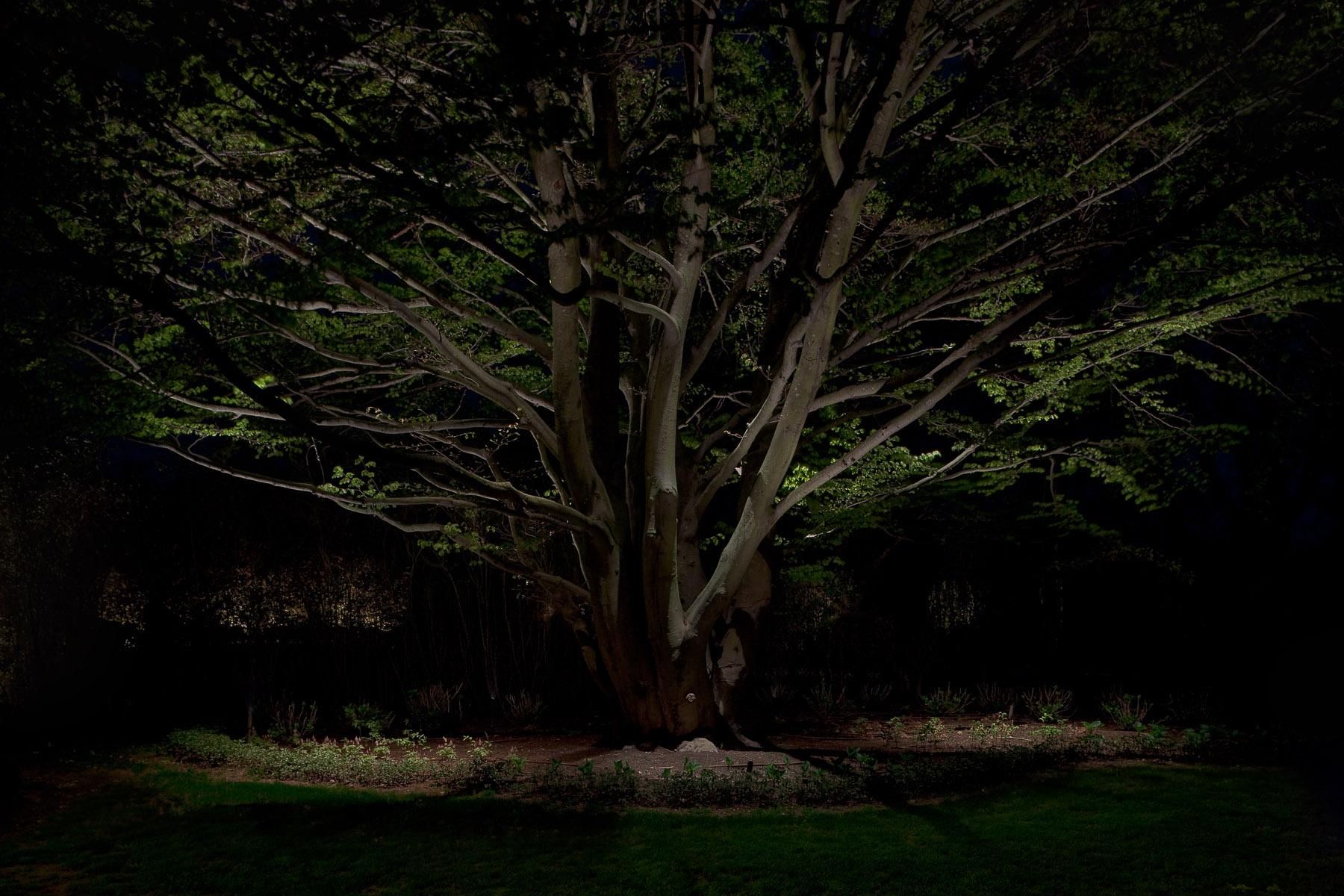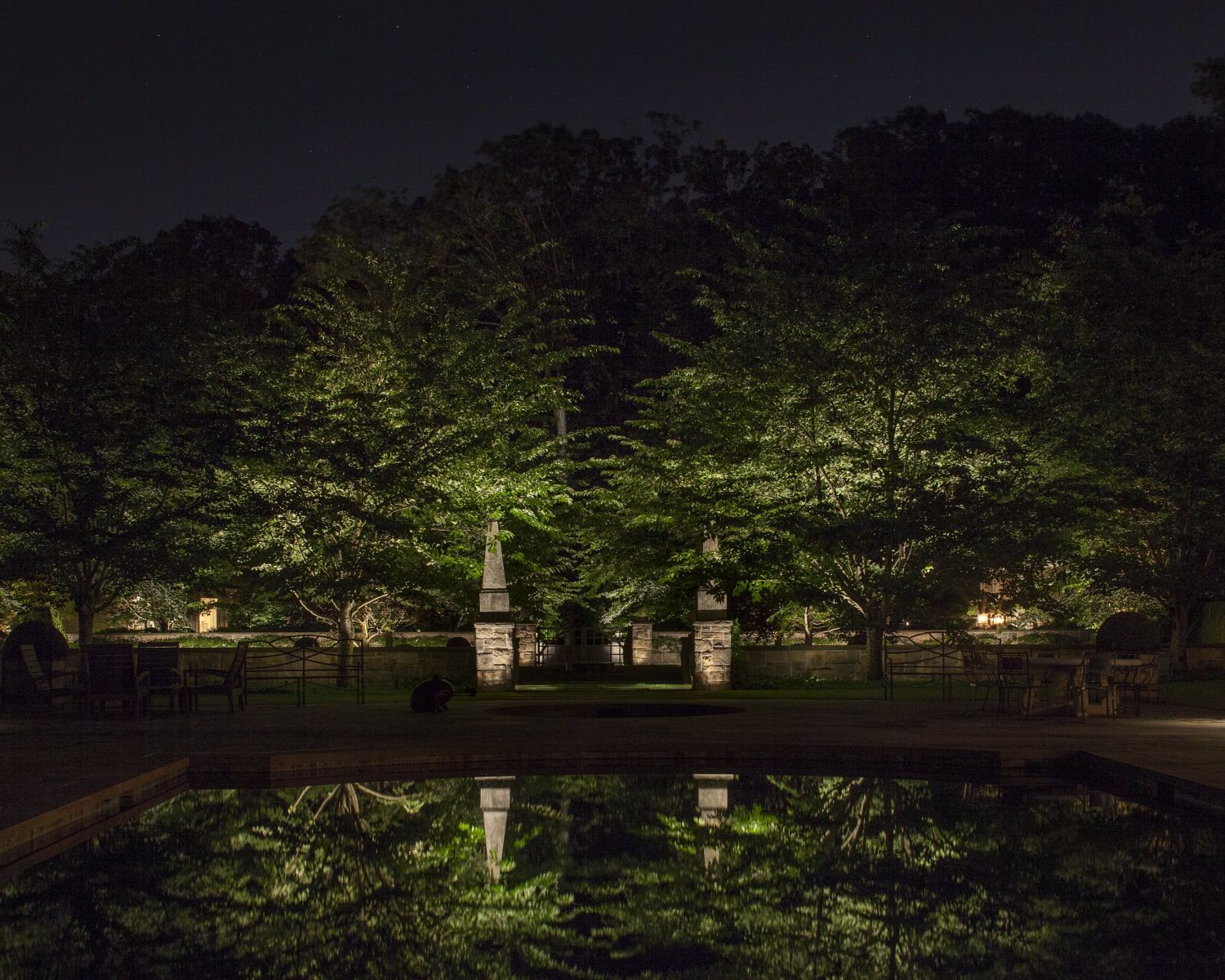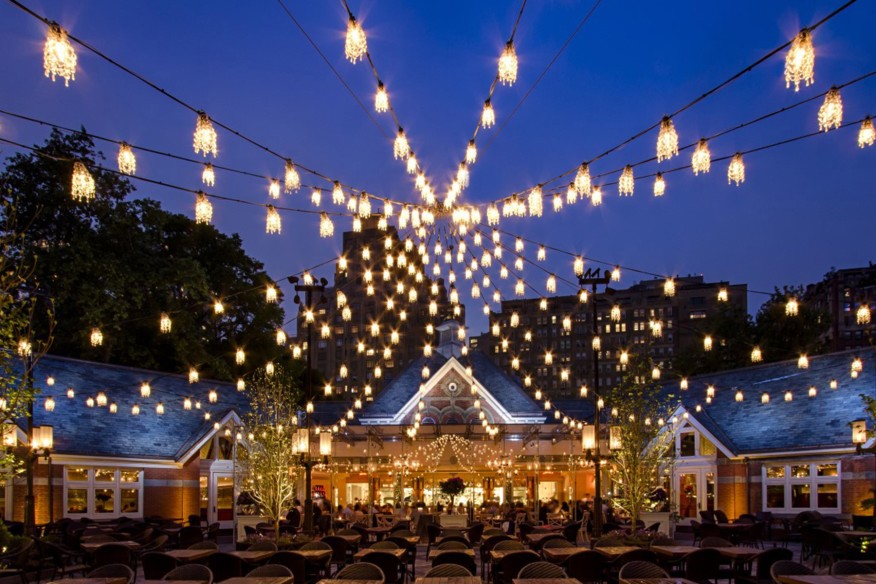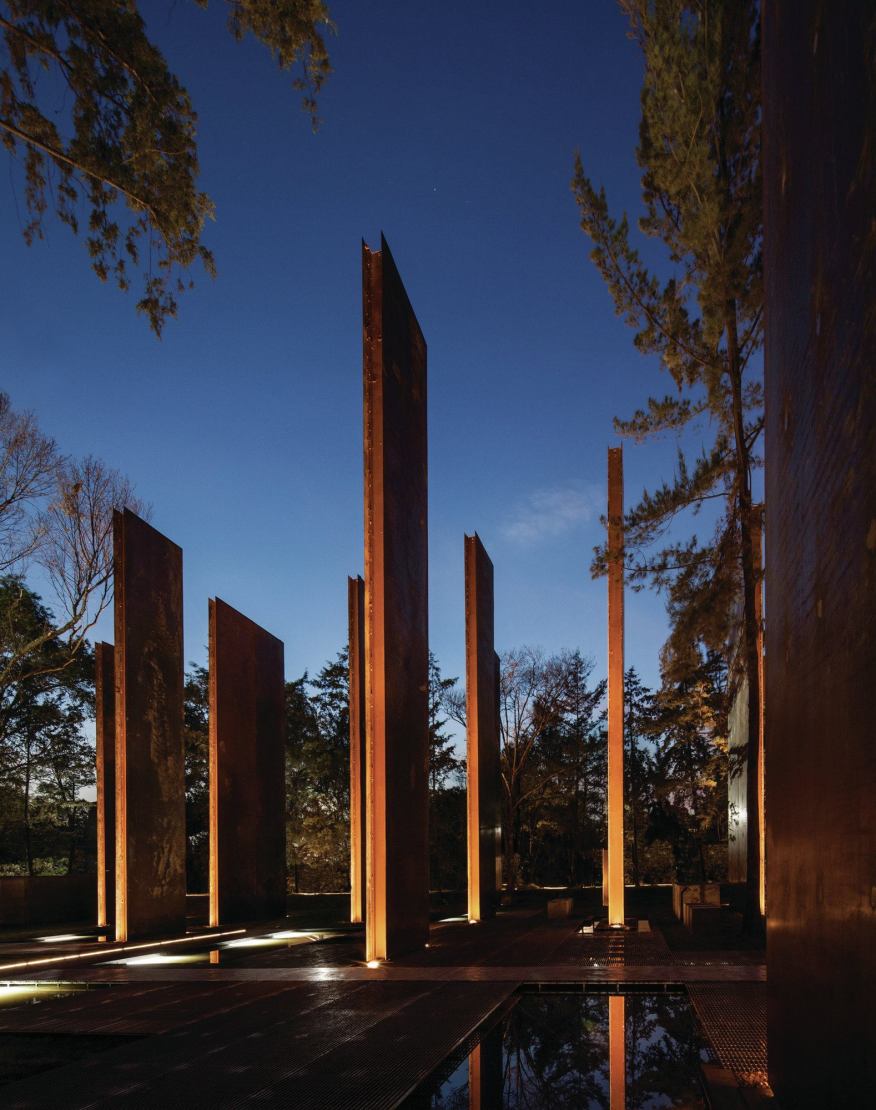A beautiful example of Orsman’s landscape lighting work.
Image courtesy of: Orsman Design, Inc.
We are delighted to introduce our guest blogger, the talented Jayson DeGeeter. Jayson’s eponymous firm is a botanically focused design studio specializing in residential landscapes, seasonal plant compositions, and bespoke floral displays. Jayson joins us today to discuss landscape lighting and its importance.

A beautiful example of Orsman’s landscape lighting work.
Image courtesy of: Orsman Design, Inc.
Indoors or out, light has a dramatic impact on a setting’s tone.
Very profoundly in the garden, atmospheric conditions vary widely from moment to moment, creating a subtly shifting palette of moods. However, nightfall brings one thing rarely afforded to a landscape designer- control. By playing with shadows and painting with light, a thoughtful lighting design can truly transform a garden.
A recent article published in ‘Introspective Magazine’ on 1stdibs profiles the work of Nathan Orsman. Orsman is the lauded New York-based landscape lighting designer whose work is now moving indoors. Orsman certainly deserves the many accolades he’s received. His work is capable of breathing new life into a site by directing the viewer’s focus and establishing mood.

Orsman’s water illumination sets him apart from other lighting designers in the field. Orsman recently said, “I employ dark against light, making sense of structure and the way by which it relates to their surrounds. I approach projects with an artistic eye but always with the understanding of their intent for day to day use.”
Image courtesy of: Orsman Design, Inc.
Looking through Orsman’s portfolio of work prompted me to think again about the landscapes I’ve designed and consider memorable sites I’ve explored. What makes for a truly spectacular lighting design?
Of course, there are the basics. Landscape lighting must fulfill a utilitarian role by enabling safe movement and illuminating essential tasks. It must also respect environmental concerns: avoid light pollution and preserve wildlife habitats.
But what makes for a show-stopping lighting design? Looking through projects that have been recognized by trade organizations such as the American Lighting Association shows a broad spectrum of answers to the question.

An important goal of the courtyard redesign was how to re-create the look and feel of the iconic Crystal Room that overlooked the park. This area was home to a group of London Plane trees that were wrapped in twinkling Christmas lights; sadly, the trees are no longer there.
Image courtesy of: Arch Lighting, photographed by: Ryan Fischer
Consider recent renovations at Tavern on the Green. The courtyard’s London Plane Trees and their twinkling string lights have been replaced with a circus canopy of bejeweled scones. The lighting scheme respects the site’s storied past with a dynamic solution that — with time — will become iconic in its own right.

Here’s the Queen Elizabeth Olympic Park, where unique orbs trace the pathway and cast lace-like shadows onto the groundplane. Again: defining the space with light and shadow, and adding color to the dialogue.
Image courtesy of: Arch Lighting, photographed by: James Newton
At Queen Elizabeth Olympic Park, the illumination of the 618-acre site is a custom-designer quaternary system designed by Nathan Orsman. Perforated, “moon-like” spheres are suspended over the walkway and emit a dappled light from a custom-designed LED light modules. The effect of the illuminated tree canopy to each side frames this already beautiful space.

Image courtesy of: Arch Lighting, photographed by: Sandra Pereznieto
I was also entranced by the Memorial to the Victims of Violence in Mexico City. Here, light serves to identify pathways while simultaneously enhancing the site’s narrative to dramatic effect.
In a manner much more applicable to a residential setting, there’s Amanemu: a villa-style resort tucked into one of Japan’s forested national parks. The project’s designers use light as a beacon. On paths, lanterns are set at intervals in accordance with modes of transit. Pavilions are lit from within, allowing roof lines to blend into the darkness. The project’s light interventions heighten a sense of quiet and serenity.
Each of these projects – like Orsman’s work – successfully evokes what in theatrical terms is called a “moment.” In all of these projects, lighting is called upon to set the stage for life’s events. More than creating a pretty picture, these lighting designs craft experiences.